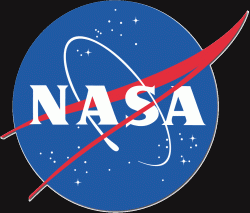Tuesday, December 18 was a day of major troubleshooting for NASA, as the space agency tries to hunt down the causes of problems plaguing both the shuttle and the International Space Station. While the day ended with few definitive answers, NASA officials said the data they gathered — and even what they didn’t find — will help them make strides towards solving the issues.
A tanking test on the shuttle’s external fuel tank helped narrow down a problem with the engine cutoff sensors to a “pass-through” connector in the system, but shuttle program manager Wayne Hale said the exact problem is not yet known.
“Exactly what we’ve got to do and where in this three-part connector we have to do it is a little bit of work ahead of us,” he said. “I’m just pleased as punch we know it’s in the connector and not some other place in the 100 feet or so of wiring and sensors and electronic boxes so we know what area to concentrate our efforts.”
But how much work the fix will entail, or how the repairs might affect the proposed January 10 launch date is also in question.
“I do not have any information about a launch date today,” Hale said. “Where the troubleshooting and replacement and repair work leads us will determine what the launch date’s going to be. We are not going to be driven by schedule on this one. We need to get to the bottom of this, fix it and make sure it’s fixed once and for all and then we can fly safely through the rest of the program, at least in this area.”
However, Hale said he felt the problems could be turned around in fairly short order.
He said the problem appears to be temperature related, or perhaps related to the tightly sealed, almost vacuum like conditions the connector operates in.
The 1 1/2-by-3 inch connector is called a pass-through connector because it is located both inside and outside the tank. The part that will be difficult to get to is the socket connector on the inside of the tank. Engineers would have to go inside the ET through a “man-hole cover” in the bottom of the tank, and that would entail a longer time to fix the problem.
Engineers are still troubleshooting some issues in bench tests away from the shuttle, and more data will be presented to program managers on Wednesday.
Meanwhile, two ISS astronauts conducted a seven hour spacewalk on Tuesday, inspecting problems with two unrelated mechanisms that allow the station’s solar wings to track the sun for power. It was the 100th EVA in support of station construction and maintenence.
Station commander Peggy Whitson and flight engineer Dan Tani first looked at a malfunctioning beta gimbal assembly that tilts the the starboard solar arrays to face the sun. Engineers thought that perhaps a micrometeoroid hit may have damaged the device, but the astronauts found no evidence of any impacts. The spacewalkers temporarily disconnected cables and a subsequent test found that the motor most likely is the problem. A new motor will be installed during the next shuttle mission.
The issues with the solar array rotary joint, a huge mechanism that also automatically rotates the solar arrays to face the sun, will require more work, contemplation and likely several spacewalks to fix. No “smoking gun” was found as to what is causing the joint to vibrate and display electrical spikes. In addition, metal shavings were found during an earlier inspection of the SARJ. Space station program manager Mike Suffredini said repairs probably won’t begin until next fall after a station crew can be trained to repair the joint. The shuttle crews “to-do” lists are already filled for the remaining shuttle flights in order to finish the construction of the ISS.
Mike Suffredini said the station team is “challenged” by the issues they are facing in the two repairs.
“The fact that it (the SARJ) looked as we expected is an enormous amount of information for us,” said Sufradini. “It would be really nice if something stood out and said ‘hey, I’m the cause of your problem,’ but we didn’t get that.”
Original News Source: NASA TV


Excellently written article for the average layman. More of such means greater dissimination, interest and (hopefully) funding.